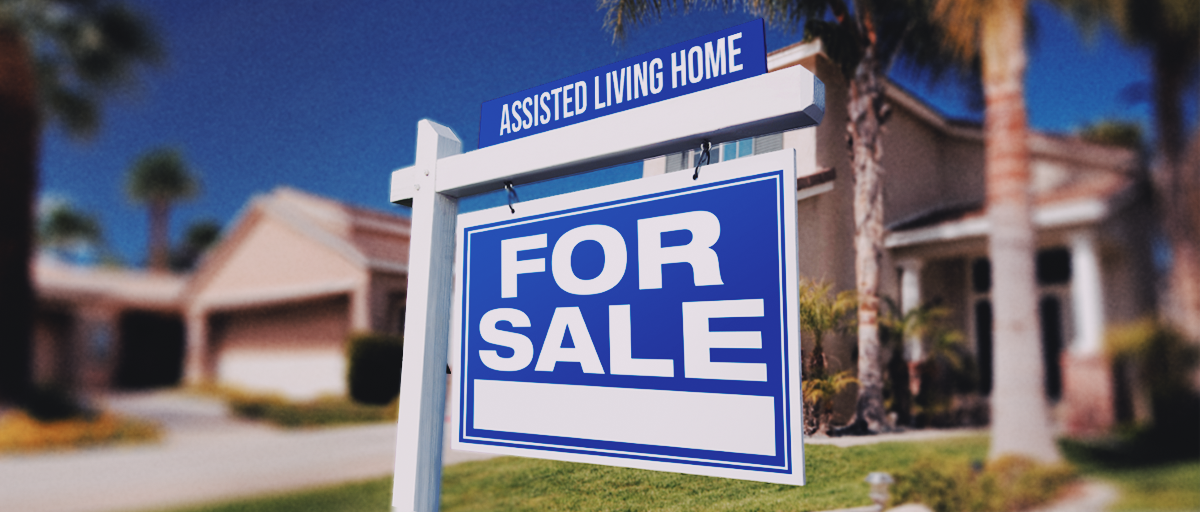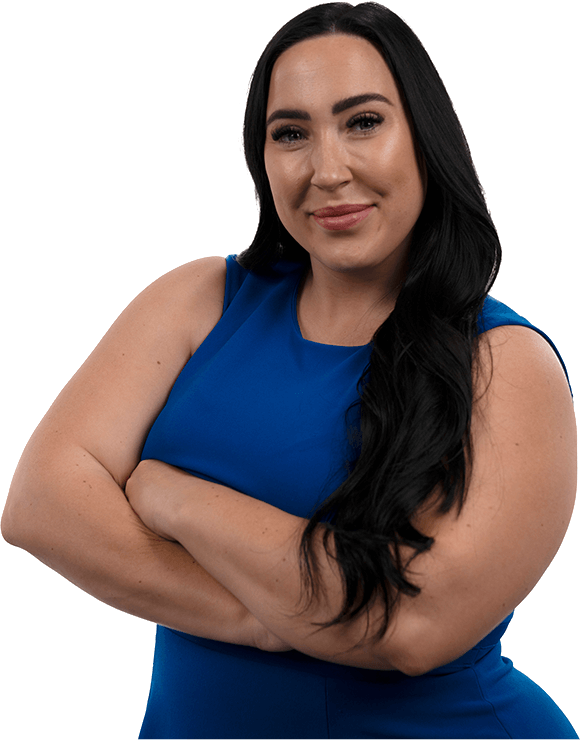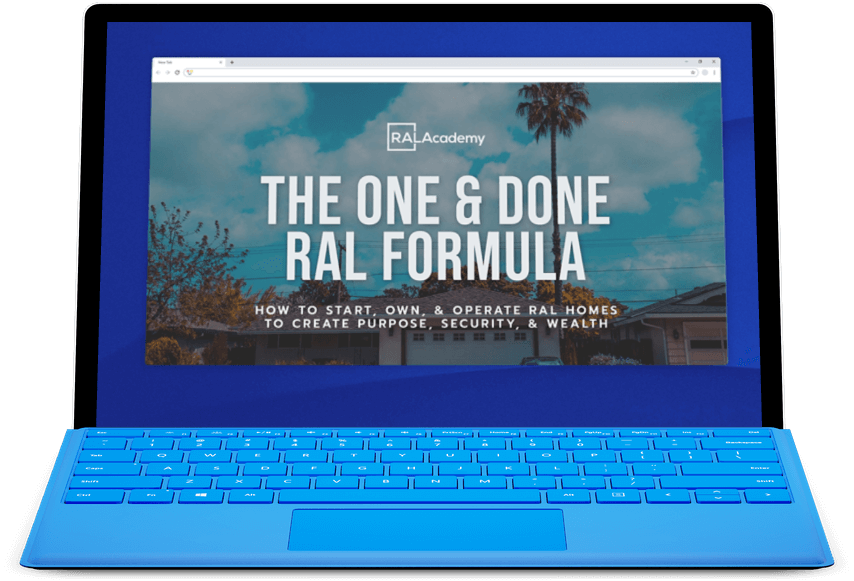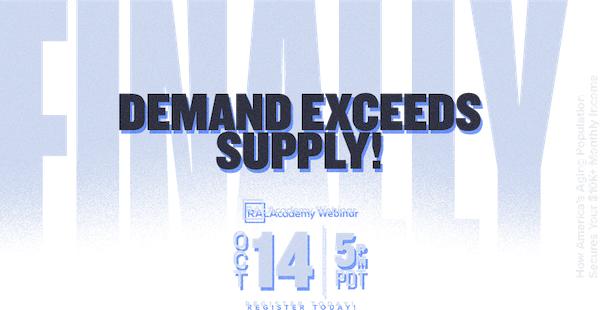If you had the opportunity to buy an existing assisted living business for sale that’s already generating impressive cash flow, would you do it?
Here’s what most people don’t know: existing assisted living homes, called residential assisted living homes, are steady income generators that some might even refer to as “cash cows.” Very few quality homes ever hit the market. Why? Because owners rarely walk away from $15,000 to $30,000 in monthly profits without compelling reasons.
When you buy an assisted living facility, you’re purchasing instant cash flow. No waiting months for licensing. No building your reputation from scratch. No wondering if residents will come.

Why Buy vs Build? The Fast Track to Profits
The real question isn’t whether buying is smart — it’s knowing how to spot the diamonds from the disasters — and knowing if the disasters are worth trying to turn around.
RALAcademy Founder, Gene Guarino, once offered $775,000 for an Arizona assisted living business not including the real estate. He offered to lease the property for $9,000 monthly instead of paying $2-3 million to buy it outright. The business was earning over $200,000 annually under poor management.
With proper systems?
Gene estimated that the same home could generate $300,000 to $400,000.

This is the power of knowing what to look for.
The Hidden Value: What’s Really In It For You?
What makes getting into assisted living an attractive proposition?
Growing demand that never stops.
The number of Americans aged 65+ will double by 2050. Unlike other investments driven by market whims, residential assisted living businesses benefit from demographic certainty. Baby Boomers aren’t a trend — they are a tsunami of guaranteed demand.

The other reason to consider buying an assisted living business?
Cash flow in an RAL beats traditional real estate.
While rental properties might net you $500-1,500 monthly, one residential assisted living home generates $5,000-15,000 in monthly profit. Private-pay residents typically pay $4,000-7,000 per month, per person. With 6-16 residents, the math becomes compelling.
Finally, assisted living businesses are recession-resistant.
Seniors need care regardless of economic conditions. During the pandemic, while other businesses shuttered, assisted living maintained record occupancy rates. This isn’t luxury spending — it’s essential care families prioritize above almost everything else.
You can build your own business from the ground up or you can spot an assisted living business for sale — either way, you’re stepping into a real estate play, with a cash flow component, and demand that is dictated by the US population.
The Critical Evaluation Checklist: Your Protection Against Bad Assisted Living Deals
You’re going to want to print this list to save yourself from expensive mistakes.
Financial Health Assessment
Occupancy Rate: Must be above 80% for at least 12 months
Revenue Mix: At least 70% private-pay residents (avoid heavy Medicaid Dependence)
Profit Margins: Should see 30-40% net margins minimum
Outstanding Debts: Verify all liens, loans, and vendor obligations
Real vs Reported Income: Request bank statements, not just P&L statements
Operational Due Diligence
License Status: Clean record with state regulators for 24+ months
Staff Retention: Average tenure should exceed 18 months
Resident Satisfaction: Talk directly to families if possible
Vendor Relationships: Verify no outstanding disputes or lawsuits
Competition Analysis: Know every facility within 5 miles
Red Flag Warnings – Walk Away If You See These:
Reputation issues you discover through online reviews
Multiple state violations in the past year
Staff turnover exceeding 50% annually
Declining occupancy trend over 6 months
Deferred maintenance exceeding $75,000
Owner unwilling to provide detailed financials
Heavy reliance on government subsidies (>50%)
The Valuation Formula: What’s It Really Worth?
You’ll want to complete all your due diligence and while your valuation will need to be thorough and complete, here is a framework you can use to determine fair market value for any residential assisted living home for sale.
Location Premium
High-demand areas command 20-30% premiums. Check local demographics. You want 10,000+ seniors within 10 miles.
Revenue Multiplier
Assisted living businesses typically sell for 2-3x annual gross revenue. A home generating $600,000 yearly might sell for $1.2-1.8 million.
Separation Strategy
Consider buying the business and leasing the real estate. This can reduce your initial investment by 60-70% while maintaining profit potential.
Watch Out for These Deal Killers
No matter what a deal looks like on the outside, or the inside, there are certain traits that should have you running for the hills.
The reputation trap is where you inherit everything, including Google reviews, state inspection records, and community whispers. One facility we evaluated looked profitable on paper but had a 2.3-star rating. It took the new owner 18 months and $200,000 in improvements to overcome that stigma.

The compliance nightmare happens when states shut you down for violations. Before you buy an assisted living business for sale, pull three years of state inspection reports. More than two major violations annually? Run. Fixing systemic compliance issues costs more than starting fresh.
Your Two Paths to Entry In Residential Assisted Living: Strategic Options
The staff time bomb might start ticking when they catch word of ownership considering a sale. If the entire staff threatens to quit when ownership changes, you’re buying problems at that point — not profits. Quality staff who stay create continuity for residents. Mass exodus means starting over — defeating the purpose of buying an existing home in the first place.
This article has focused on purchasing an existing business, and much of that is in contrast to starting from scratch. But you actually have options when acquiring an already existing assisted living business.
Option 1: Buy the Business, Lease the Property
- Lower entry cost: $100,000-300,000 vs $1-3 million
- Immediate cash flow: Operating from day one
- Reduced risk: No property maintenance responsibilities
- Exit flexibility: Easier to sell a business than real estate
Option 2: Buy Everything
- Complete control: Modify property as needed
- Dual appreciation: Businesses value plus real estate
- Tax advantages: Depreciation and expense deductions
- Legacy building: True ownership of the entire operation
There is no “right” or “wrong” option. Working with a Residential Assisted Living business coach can help you identify your ideal business structure. They can work with you to identify goals that are ideal to help you reach the situation you want. For instance, if you’re wanting “hands off” versus “somewhat hands on” they will be able to make recommendations to help you achieve that result.
Our coaches at RALAcademy work with future owners to help them answer questions like:
- Should I buy an existing business or should I start from scratch?
- Is it worth buying the real estate with this deal?
- How can I tell if the staff currently occupying the business is quality and worth keeping?
- What is the true profit potential for this specific business I am interested in?
Like most anything with substantial financial commitment, approaching the deal on your own is less than smart. Not only will someone who is qualified help you identify the implications of what a potential seller is sharing with you, they will also help you uncover potential problems you can’t see simply from looking at the books or walking the property.
You can spend money to work with qualified consultants or coaches, or you can pay a mysterious “stupid tax” that may not have a cap.
Why Markets Vary (And Why Local Expertise Matters)
California’s regulations differ vastly from Arizona’s. Texas allows different care levels than Colorado. One state might require RN oversight; another accepts LPN supervision. These are not details — they are deal makers or breakers worth hundreds of thousands of dollars.
That’s why smart buyers don’t go alone.
RALAcademy has built a roadmap to success that has been proven in just about every market across the nation by men and women from all different backgrounds, skill levels, and experience backgrounds. There is no shortage of ‘RAL experts’ popping up on social media or launching their own ‘courses’ but what you get with RALAcademy that you forfeit with some of these other options is expertise and experience.
Multiple markets.
Multiple geographic locations.
Multiple deals.
Multiple states.
Multiple ownership structures.
In short, you get experience and expertise that has seen it all.
You want to work with someone who can help you identify the potential of your market.
Your Action Path and Your Success Insurance
Purchasing an existing assisted living is an excellent way to gain entry into the lucrative business opportunity of residential assisted living. To make this happen you will need:
- Capital: $120,000-500,000 depending on the deal structure
- Financing: SBA loans now available for qualified buyers
- Due Diligence Period: 30-60 days minimum for thorough evaluation
- Transition Planning: 90-day handover with previous owner involvement
- Expert Guidance: Industry professionals who’ve done this before
Whether you decide to buy a residential assisted facility already in operation or start your own residential assisted living business, success depends on knowing the proven systems that work.
RALAcademy’s 3-Day Fast-Track isn’t just the fastest way to enter the business — it is your roadmap to profits and the shortest path to either opening doors or turning around an underperforming acquisition.
What makes us different?
Our staff of coaches and trainers is composed of current owners operating profitable homes right now — not former owners teaching outdated methods. They’ve overcome every obstacle in virtually every market. While others offer regional expertise from one or two homes, we bring predictable success patterns from hundreds of thriving businesses nationwide.
The contrast is stark: learn from someone with one-time success, or learn from those with proven, repeatable results across every market condition.
Your Next Move in Residential Assisted Living
The senior housing crisis is real. The profit opportunity is massive. When realizing the potential, the question isn’t whether to invest in Residential Assisted Living — it’s whether you will seize the existing opportunities or build from scratch.
Want to explore your options? RALAcademy the country’s premier Residential Assisted Living Training at the 3-Day Fast-Track in Phoenix, Arizona. There is no substitute anywhere for the immersion into the industry during this multi-day educational experience.
If you’re looking for existing assisted living businesses for sale, join the RAL National Association at ralna.org. This is the single largest network of 30,000+ RAL Professionals where deals happen before hitting the open market.
Don’t let analysis paralysis stop you. The deals don’t wait. The demographic wave won’t slow down. And the difference between those who succeed and those who struggle>?
The right knowledge, applied at the right time, with the right support.
America’s seniors need quality care. Your community needs more options. And you deserve a business that provides both profit and purpose. Take the first step. The opportunity won’t wait forever.







